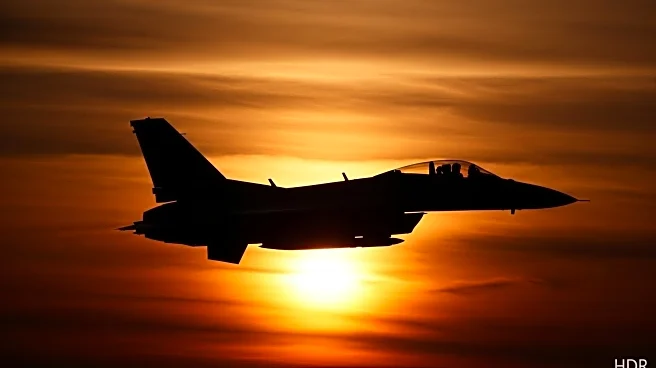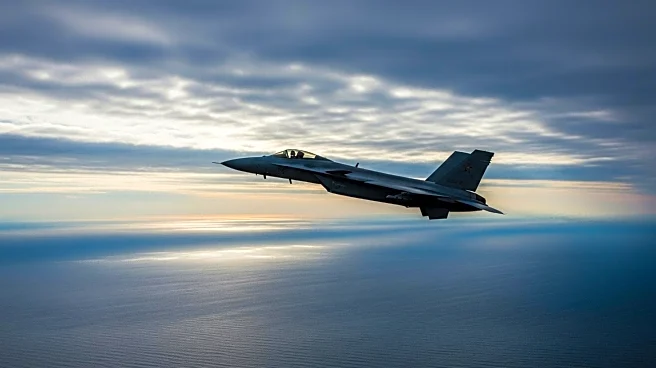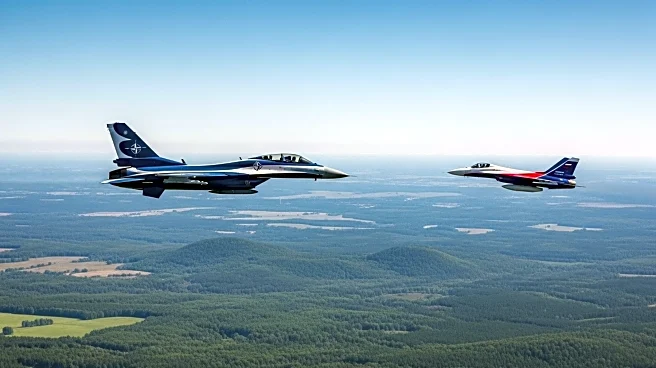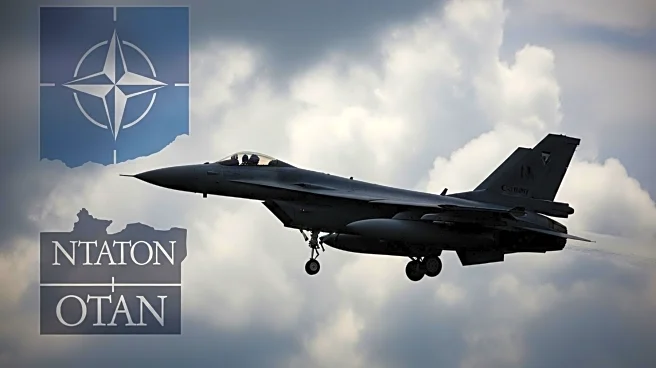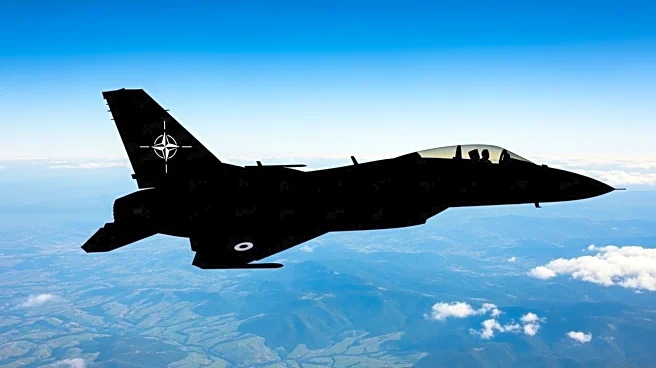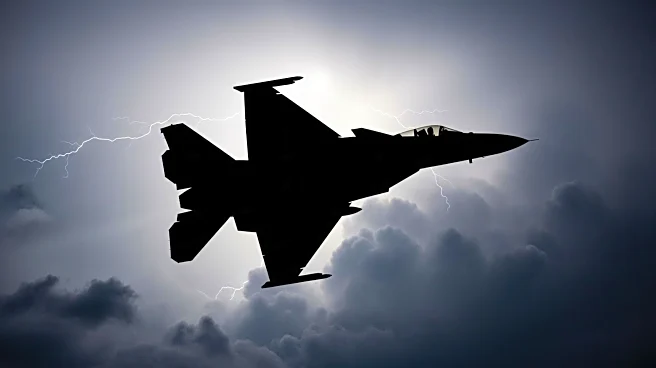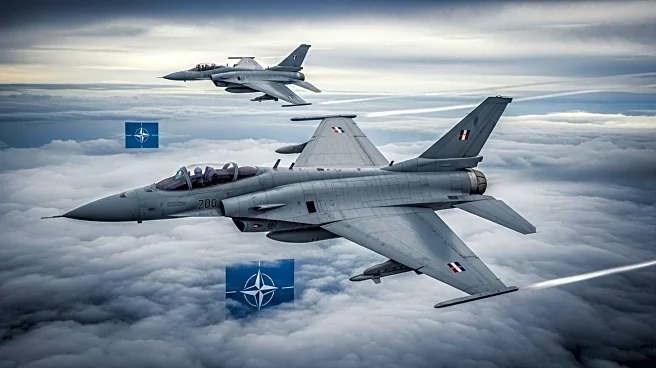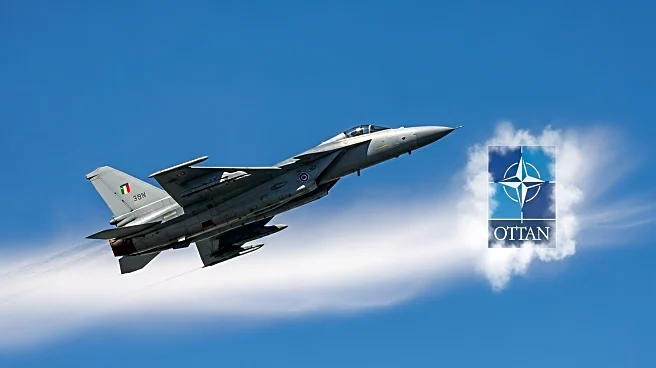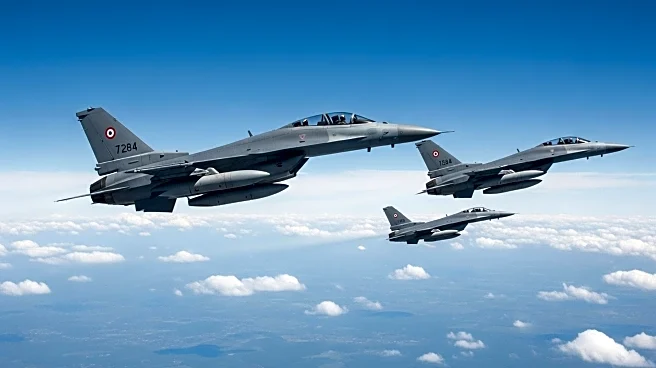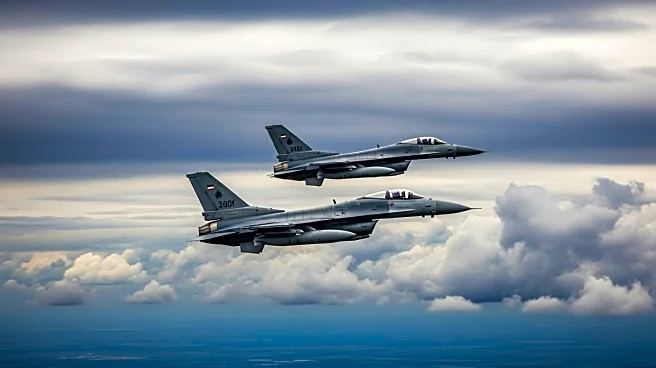What's Happening?
NATO has protested the incursion of Russian combat aircraft into Estonian airspace on September 19, describing it as reckless behavior. Three Russian Aerospace Forces MiG-31 interceptor and cruise missile carrier aircraft entered Estonian airspace for 12 minutes before being escorted out by NATO fighters. The aircraft were intercepted by Italian Air Force F-35A jets, Swedish Gripen C, and Finnish F/A-18C Hornet aircraft. The Estonian government reported that the Russian aircraft had no flight plan files and were operating with transponders turned off. As a result, Estonia has requested an Article 4 meeting with NATO to discuss the incident and potential responses.
Why It's Important?
The incursion into Estonian airspace underscores ongoing tensions between Russia and NATO, particularly in the Baltic region. Such violations challenge NATO's ability to maintain security and sovereignty for its member states. The incident highlights the importance of NATO's quick reaction capabilities and the need for continued vigilance against potential threats. Estonia's request for an Article 4 meeting indicates the seriousness of the situation and the need for collective discussion and decision-making among NATO allies. The event may lead to increased military readiness and strategic planning within the alliance.
What's Next?
Following Estonia's request for an Article 4 meeting, NATO's principal decision-making body, the North Atlantic Council, will likely convene to discuss the incident and determine appropriate actions. This could include diplomatic measures, increased military presence in the region, or further strategic planning to prevent future violations. The incident may also prompt discussions on enhancing airspace security and surveillance capabilities among NATO members. Russia's denial of the violation adds complexity to diplomatic efforts, potentially leading to further geopolitical tensions.

